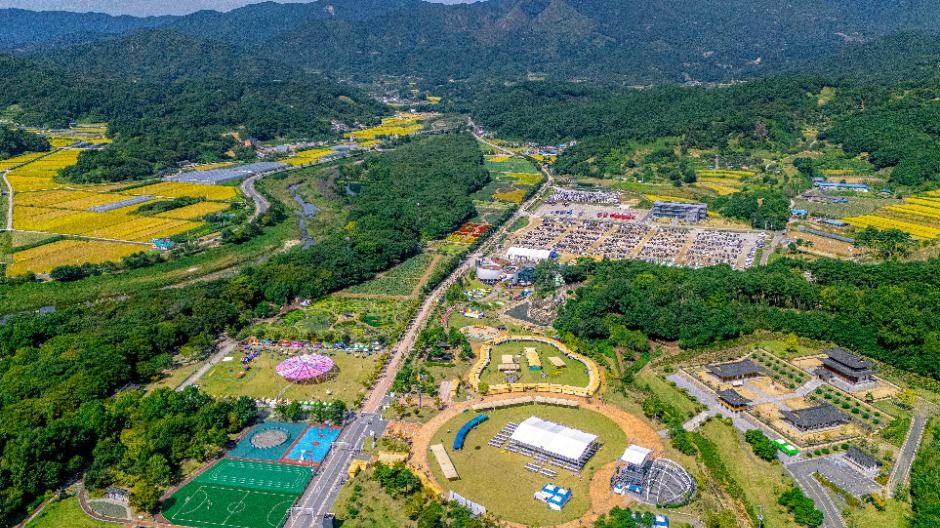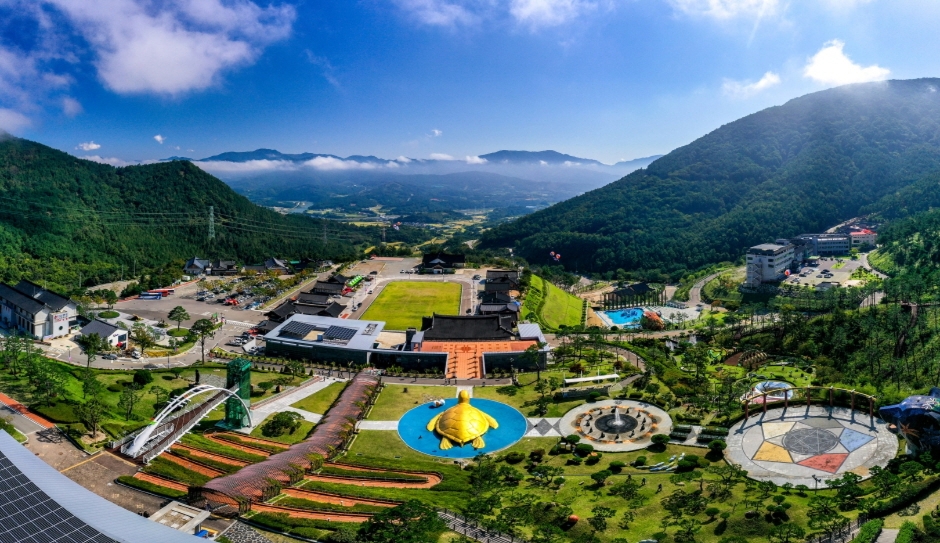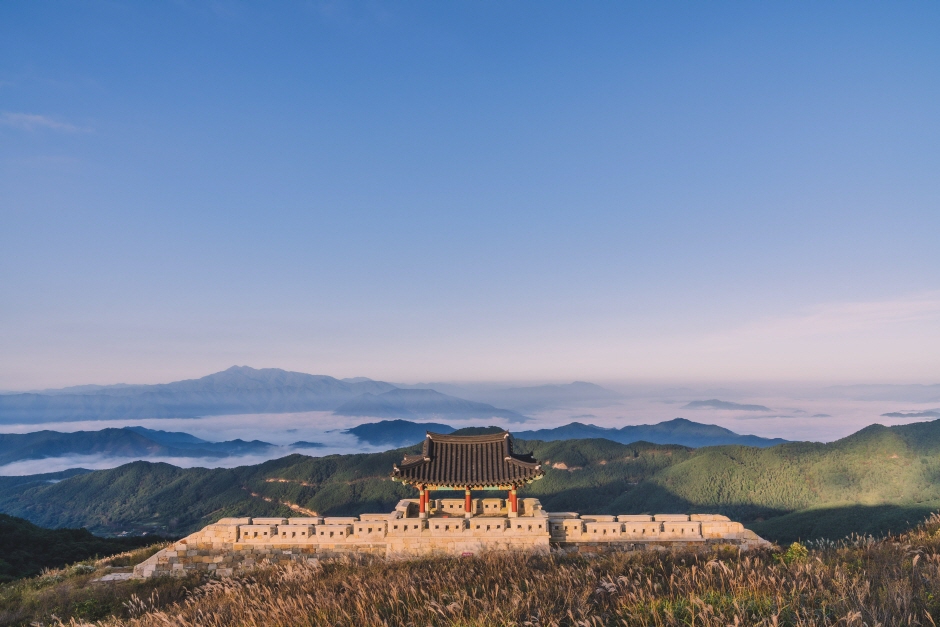Festival del Sansam de Hamyang (함양산삼축제)
6.9Km 2025-04-08
Pilbongsan-gil 49, Hamyang-eup, Hamyang-gun, Gyeongsangnam-do.
055-964-3353
Hamyang es una zona productora famosa de hierbas medicinales y sansam (ginseng silvestre) por su ambiente limpio y fresco. Es un lugar muy visitado por muchos coreanos y extranjeros que quieren comprar hierbas naturales de calidad. Este festival se organiza con la finalidad de promocionar aún más los productos de esta región. Se presentan diversos espectáculos y actividades que entretienen a los visitantes, como fuegos artificiales, funciones de B-boy, concurso de canto, elaboración de licor de sansam, actividades para plantar sansam, etc.
Parque Sangnim (상림공원)
6.9Km 2021-11-29
Pilbongsan-gil 49, Hamyang-eup, Hamyang-gun, Gyeongsangnam-do
+82-55-960-5756
Situado en el distrito de Hamyang-gun, en la provincia de Gyeongsangnam-do, el parque Sangnim originalmente se encontraba en un bosque llamado Hoanrim, fundado hace 1.200 años con el fin de proteger las orillas del río. Este parque es tan reputado en la región que hasta existe un proverbio que dice: "Aunque olvide su ciudad natal, nunca podrá olvidarse de Sangnim".
Paso de Jianjae en Hamyang (함양 지안재)
11.8Km 2024-10-10
San 119-3, Guryong-ri, Hamyang-eup, Hamyang-gun, Gyeongsangnam-do
Aldea Donguibogam en Sancheong (산청 동의보감촌)
13.0Km 2023-11-15
Donguibogam-ro 555-beongil 61, Sancheong-gun, Gyeongsangnam-do
Monte Hwangmaesan (황매산)
17.6Km 2023-05-04
Hwangmaesan-ro 1202-beongil, Chahwang-myeon, Sancheong-gun, Gyeongsangnam-do
Festival de las Azaleas Reales del Monte Hwangmaesan (황매산철쭉제)
19.0Km 2025-04-04
Hwangmaesangongwon-gil 331, Gahoe-myeon, Hapcheon-gun, Gyeongsangnam-do
055-930-4769
El Festival de las Azaleas Reales del Monte Hwangmaesan se celebra anualmente en el Parque Municipal del Monte Hwangmaesan. Este parque incluye el Mosanjae, conocido por ser el mejor camino para hacer excursiones de la nación con los campos más grandes de azaleas; también está el Yeongamsaji (zona del templo Yeonamsa), que se encuentra rodeado por prominentes rocas talladas. En términos de distritos administrativos, el monte Hwangmaesan se extiende a través de los pueblos de Dunnae-ri y Jungchon-ri del municipio de Gahoe-myeon, y de los pueblos Hageum-ri y Hoeyang-ri del municipio de Daebyeong-myeon. Hwangmaesan fue designado como parque municipal el 18 de noviembre de 1983. La montaña ofrece un gran paisaje durante todo el año: en primavera, las flores de azalea cubren los prados interminables; en verano, los visitantes pueden disfrutar de los frondosos y refrescantes valles; en otoño, la montaña se llena de hojas color carmesí; y, en invierno, el viento frío se arremolina alrededor de los picos cubiertos de nieve.




 Español
Español
 한국어
한국어 English
English 日本語
日本語 中文(简体)
中文(简体) Deutsch
Deutsch Français
Français Русский
Русский